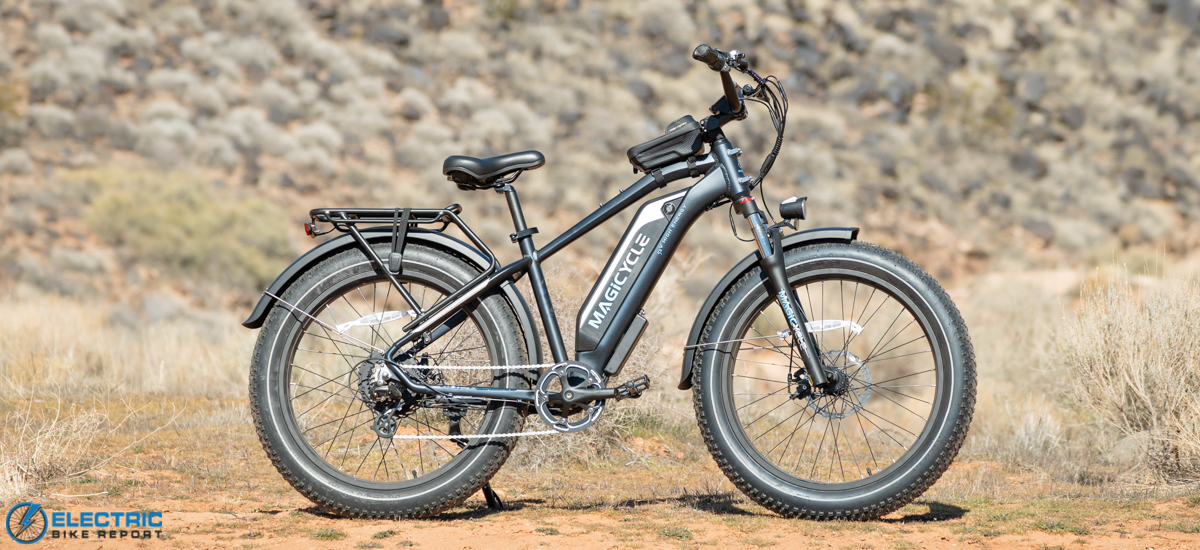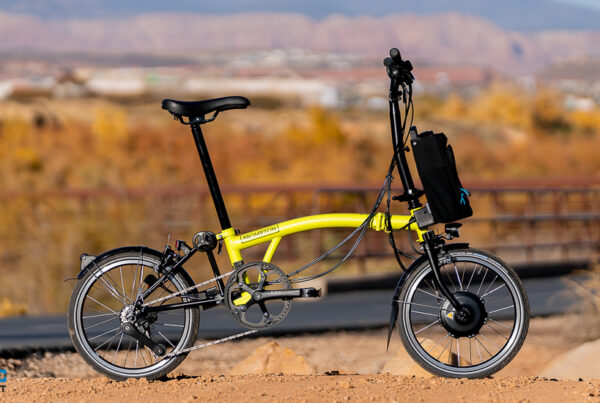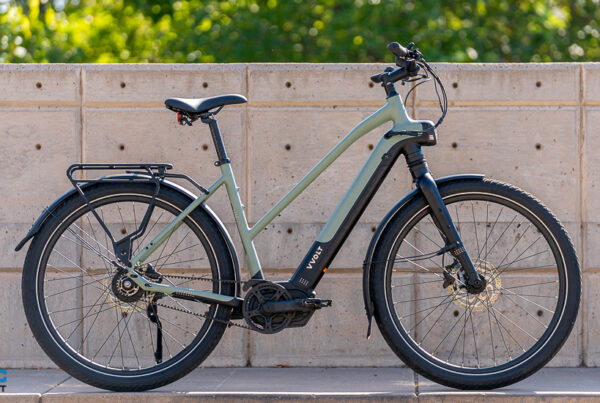Like many affordable electric fat bikes, the Magicycle Cruiser is built around a 750W rear hub motor. This one is made by a motor manufacturer called Shengyi and makes a notable 86Nm of torque.
Powering that motor is a 52V, 15Ah (780Wh) battery that’s a little on the larger end of the spectrum. Most e-bikes in this category sit at about 672Wh, though there are some larger ones.
You also get the standard-issue mixed Shimano drivetrain, which uses an Altus rear derailleur and Tourney Shifter — a setup that’s quickly become the norm for sub-$2,000 electric fat bikes.
Finally the brakes on our review model are an unbranded mechanical disk brake. All the other componentry is fairly normal spec of a bike in this category at this price. You’ve got a comfort saddle, Kenda fat tires, ergonomic grips, a rear rack capable of 55 lbs and a few other accouterments you’d expect like fenders and lights.
But while much of this bike is standard issue, there are some performance (and other) issues that came up during testing that are worth noting.
The first is the bike’s extremely high speed. Our review bike came to us fully unlocked, with both the throttle and pedal assist capable of powering the bike well over the respective legal limits. On throttle alone the Magicycle cruises at 27 mph on flat ground. This means this bike is not street or bike path legal in most U.S. states despite the brand marketing it as a Class 3 e-bike. We did attempt to change the settings to legal levels and even reached out to Magicycle for guidance, but we had trouble getting any speed adjustments we made to stick. Each time we restarted the bike, it would default back to unlocked speeds.
This unlocked speed is a safety and legal concern that we’ll dive into in more detail in the motor performance section, but it’s an immediate red flag for our testing team.
The second issue, which also ties in to the bike’s high speed, is the brakes. The unbranded mechanical disk brakes on the Magicycle are unacceptably poor performing. We’ll dive into the particulars of just how poorly they worked in our brake test section, but the short and sweet of it is that this bike far outpowers and outweighs its braking capability.
Lastly, which isn’t directly related to on-road performance but is information I’d like to know if I were a consumer eyeing this bike, is that, during our testing, a competitor to Magicycle reached out to us with evidence that Magicycle had cannibalized much of their website and reappropriated it as their own. Everything from the design to the words to even some of the product photos were directly taken from this competitor’s site and rebranded as Magicycle. We independently verified these claims and found articles, photos and even an entire product page on the Magicycle website that belonged to this competing brand.
Asked for comment on this issue, Magicycle in an email defended their website and said they were attempting to “learn” from the competing brand in question and other successful affordable e-bike brands.
“We respect them as great competitors but we are totally different and we are not their duplication,” Magicycle said in the email. Magicycle has since changed or removed much of the cannibalized content after Electric Bike Report reached out for comment on the issue.
This last fact isn’t performance related, but it is something I’d like to know if I were on the other side of this screen trying to decide which e-bike to spend my money on. It may seem trivial, or like a spat between two competitors that doesn’t hold bearing over the end consumer, but issues like this can serve as a smoke signal for problems that could directly affect the end consumer.
Source link








